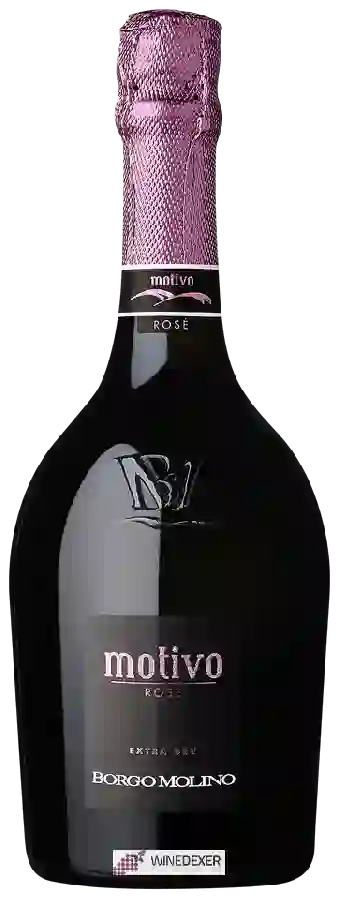
Winery Borgo MolinoMotivo Rosé Extra Dry
This wine is a blend of 2 varietals which are the Glera and the Raboso Piave.
This wine generally goes well with pork, poultry or beef.
Wine flavors and olphactive analysis
On the nose the Motivo Rosé Extra Dry of Winery Borgo Molino in the region of Veneto often reveals types of flavors of tree fruit, citrus fruit or red fruit.
Food and wine pairings with Motivo Rosé Extra Dry
Pairings that work perfectly with Motivo Rosé Extra Dry
Original food and wine pairings with Motivo Rosé Extra Dry
The Motivo Rosé Extra Dry of Winery Borgo Molino matches generally quite well with dishes of beef, lamb or pork such as recipes of pot roast, lamb tagine with broad beans or cannelloni of meat.
Details and technical informations about Winery Borgo Molino's Motivo Rosé Extra Dry.
Discover the grape variety: Glera
It is said to be of Slovenian origin, where it is cultivated under the name of Prosekar, also known for a long time in Italy under the name of Glera. It should not be confused with prosecco lungo - although there is a family link - and prosecco nostrano, which is none other than Tuscany's malvasia. Note that Vitouska - another Italian grape variety - is the result of a natural intraspecific cross between Tuscan malvasia and Prosecco. Under the name of Glera, it is registered in the Official Catalogue of wine grape varieties list A. It can be found in practically all of the former Yugoslavia, and more surprisingly in Argentina, but is virtually unknown in France.
Last vintages of this wine
The best vintages of Motivo Rosé Extra Dry from Winery Borgo Molino are 2016, 2014, 2013, 2008 and 0.
Informations about the Winery Borgo Molino
The Winery Borgo Molino is one of of the world's greatest estates. It offers 66 wines for sale in the of Veneto to come and discover on site or to buy online.
The wine region of Veneto
Veneto is an important and growing wine region in northeastern Italy. Veneto is administratively Part of the Triveneto area, aLong with its smaller neighbors, Trentino-Alto Adige and Friuli-Venezia Giulia. In terms of geography, culture and wine styles, it represents a transition from the Alpine and Germanic-Slavic end of Italy to the warmer, drier, more Roman lands to the South. Veneto is slightly smaller than the other major Italian wine regions - Piedmont, Tuscany, Lombardy, Puglia and Sicily - but it produces more wine than any of them.
The word of the wine: Biodynamics
Biodynamic farming method initiated by Rudolf Steiner which forbids all chemical treatments based on synthetic products. Biodynamics is based on the interaction between the movements of the planets and the development of plants and uses preparations based on organic and mineral materials.














